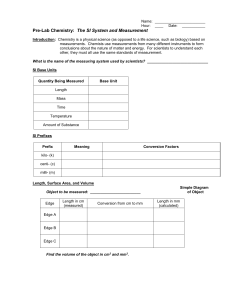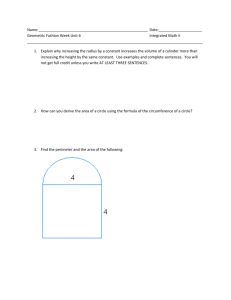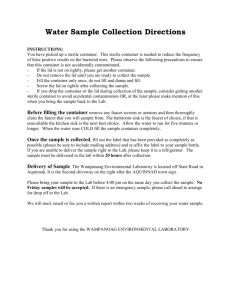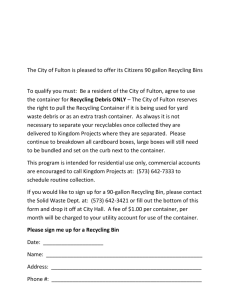Cool Cubes Challenge - Michael Shorr science
advertisement
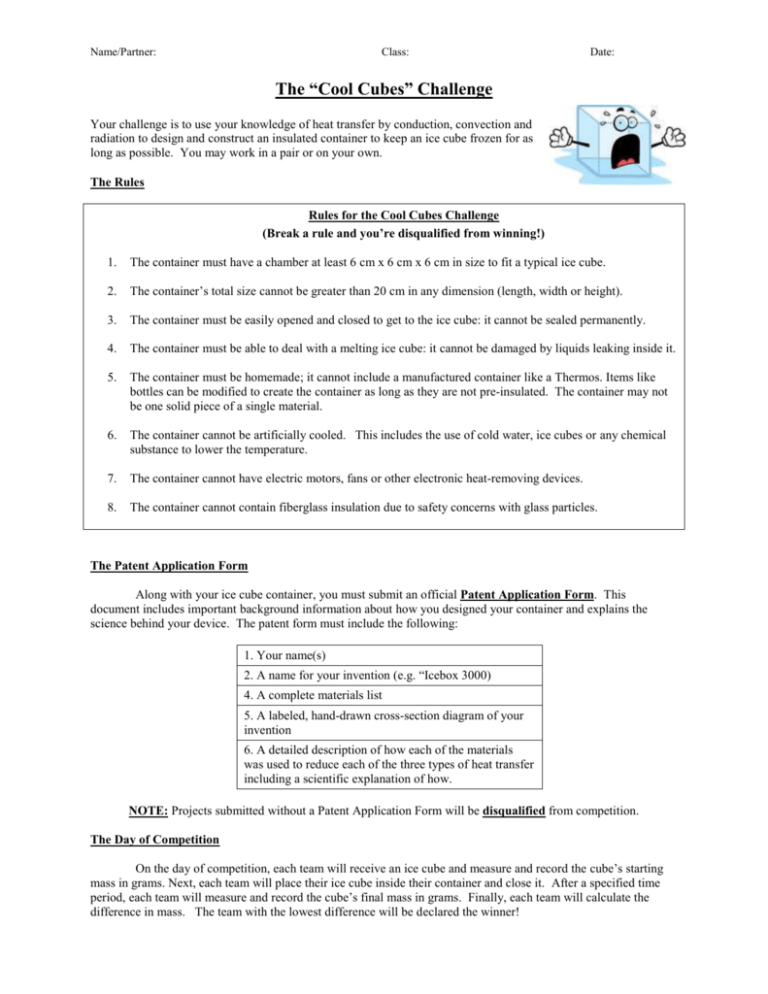
Name/Partner: Class: Date: The “Cool Cubes” Challenge Your challenge is to use your knowledge of heat transfer by conduction, convection and radiation to design and construct an insulated container to keep an ice cube frozen for as long as possible. You may work in a pair or on your own. The Rules Rules for the Cool Cubes Challenge (Break a rule and you’re disqualified from winning!) 1. The container must have a chamber at least 6 cm x 6 cm x 6 cm in size to fit a typical ice cube. 2. The container’s total size cannot be greater than 20 cm in any dimension (length, width or height). 3. The container must be easily opened and closed to get to the ice cube: it cannot be sealed permanently. 4. The container must be able to deal with a melting ice cube: it cannot be damaged by liquids leaking inside it. 5. The container must be homemade; it cannot include a manufactured container like a Thermos. Items like bottles can be modified to create the container as long as they are not pre-insulated. The container may not be one solid piece of a single material. 6. The container cannot be artificially cooled. This includes the use of cold water, ice cubes or any chemical substance to lower the temperature. 7. The container cannot have electric motors, fans or other electronic heat-removing devices. 8. The container cannot contain fiberglass insulation due to safety concerns with glass particles. The Patent Application Form Along with your ice cube container, you must submit an official Patent Application Form. This document includes important background information about how you designed your container and explains the science behind your device. The patent form must include the following: 1. Your name(s) 2. A name for your invention (e.g. “Icebox 3000) 4. A complete materials list 5. A labeled, hand-drawn cross-section diagram of your invention 6. A detailed description of how each of the materials was used to reduce each of the three types of heat transfer including a scientific explanation of how. NOTE: Projects submitted without a Patent Application Form will be disqualified from competition. The Day of Competition On the day of competition, each team will receive an ice cube and measure and record the cube’s starting mass in grams. Next, each team will place their ice cube inside their container and close it. After a specified time period, each team will measure and record the cube’s final mass in grams. Finally, each team will calculate the difference in mass. The team with the lowest difference will be declared the winner! Rubric: Cool Cubes Challenge (SKILLS: analysis, communication) Name(s): ________________________________________ Criteria Materials List Description and Class: _______________ Expectations Score List is detailed and lists all relevant materials used in the project Each relevant layer or design feature of the fridge is described fully Each method or strategy for slowing heat transfer by conduction Explanation of shows full understanding of the topic, including proper vocabulary Design Features and particle theory of heat transfer. of Container 1 2 3 4 3 6 8 12 2 4 6 8 1 2 3 4 Each method or strategy for slowing heat transfer by convection shows full understanding of the topic, including proper vocabulary and particle theory of heat transfer. Each method or strategy for slowing heat transfer by radiation shows full understanding of the topic, including proper vocabulary Cross-Sectional The diagram is in cross-section Diagram of The diagram is an accurate representation of the invention Container All relevant layers/design features of the invention are labeled The diagram is neat, clear and shows attention to detail Language and The information is written in the your own words Literacy Language is used purposefully and clearly The project has been proofread and contains minimal or no errors in mechanics (spelling and grammar) Total (/28): Comments: Goals:


